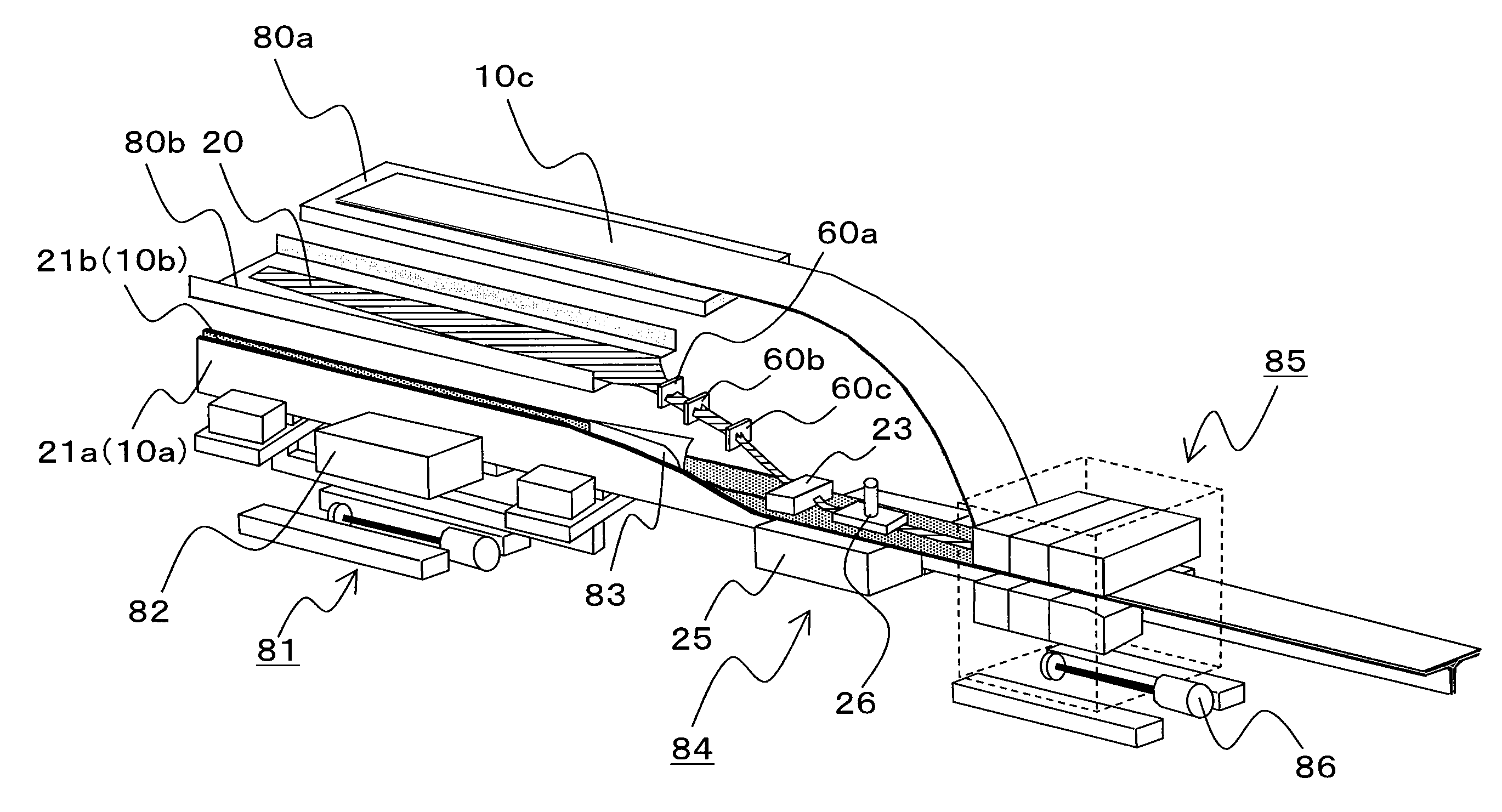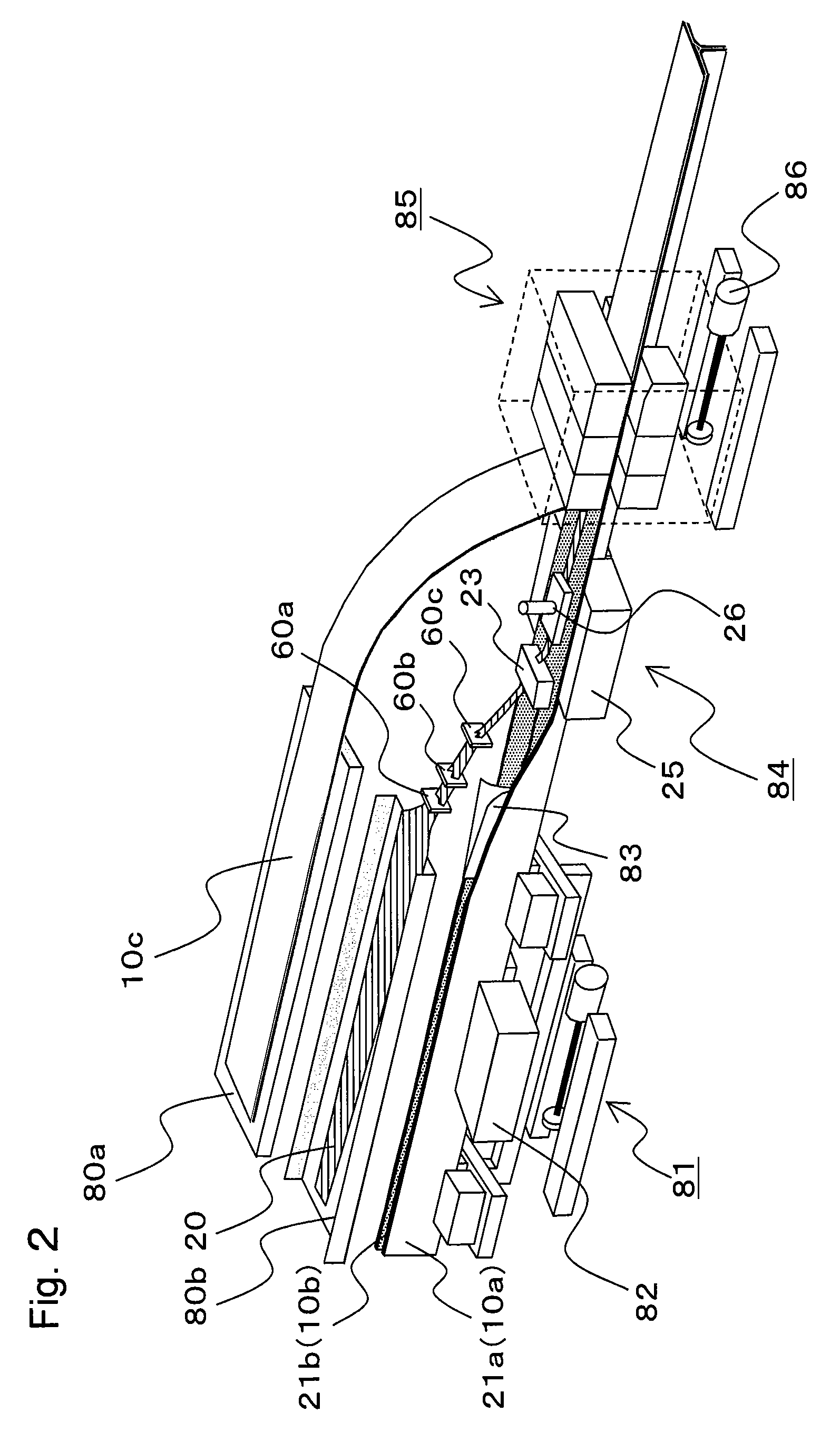Process and apparatus for producing beam member
a beam member and process technology, applied in the direction of transportation and packaging, other domestic objects, bands, etc., can solve the problems of insufficient rigidity, insufficient junction strength, and insufficient rigidity of resin-rich gaps, so as to achieve continuous and efficient filling of gaps
- Summary
- Abstract
- Description
- Claims
- Application Information
AI Technical Summary
Benefits of technology
Problems solved by technology
Method used
Image
Examples
Embodiment Construction
[0056]A preferred embodiment of a process and an apparatus for producing a beam member according to the present invention is explained below with reference to the drawings. Specifically, there is explained a case of changing an R shape (a curvature radius) of a curve line forming a wedge shape of a shaped filler, from a large R shape to a small R shape, corresponding to a change of a cross-sectional shape of a gap formed at a branching point of reinforcing fiber base materials that makes a pair configuring a beam member.
[0057]FIG. 2 is a schematic perspective view showing an example of an apparatus for producing a beam member according to the present invention. More specifically, FIG. 2 shows an apparatus that produces a beam member with a T cross-sectional shape shown in FIG. 1. The apparatus mainly includes a material supplying apparatus (e.g. material supplying apparatuses 80a, 80b), a material carrying apparatus (e.g. a pulling apparatus 81), a web portion forming apparatus 82, ...
PUM
| Property | Measurement | Unit |
|---|---|---|
| glass transition temperature | aaaaa | aaaaa |
| softening temperature Tg | aaaaa | aaaaa |
| softening temperature Tg | aaaaa | aaaaa |
Abstract
Description
Claims
Application Information
 Login to View More
Login to View More - R&D
- Intellectual Property
- Life Sciences
- Materials
- Tech Scout
- Unparalleled Data Quality
- Higher Quality Content
- 60% Fewer Hallucinations
Browse by: Latest US Patents, China's latest patents, Technical Efficacy Thesaurus, Application Domain, Technology Topic, Popular Technical Reports.
© 2025 PatSnap. All rights reserved.Legal|Privacy policy|Modern Slavery Act Transparency Statement|Sitemap|About US| Contact US: help@patsnap.com



